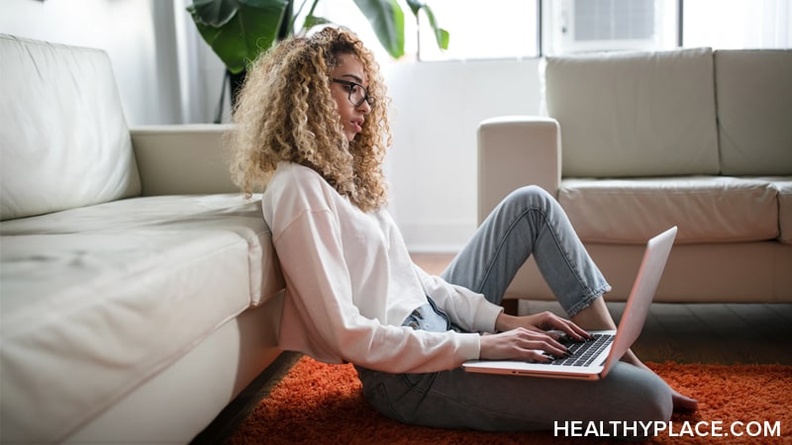2 Rules I Follow to Make My Apartment ADHD-Friendly

Living alone has either been the best thing for me or the worst, and it fluctuates often. As an adult living with attention-deficit/hyperactivity disorder (ADHD), it's easy to stray from the task at hand or spend a whole day doing nothing, which is why I strive to make my apartment ADHD-friendly.
Why I Need an ADHD-Friendly Apartment
When nobody is around to see you scroll through TikTok for six hours on the couch, forgetting to eat or change out of your pajamas (a common experience in depression, a condition also known to co-occur in those with ADHD at a risk factor of nearly four times higher than with neurotypicals1), it can be easy to do. Even in non-depressive states, the temptation to procrastinate on work and instead spend time pursuing more engaging, impulsive interests (e.g., video games, television, picking the best font) can be overwhelming, and pushing past this requires self-discipline and a system to maintain consistency.
And as with any good system, this starts at the foundation, which, in this instance, is the environment — that is, I mean, the apartment you live in, not the capital-E "Environment" (because trying to fix the world's environmental issues before doing your work for the day is a cause more lost than the discovery of Atlantis).
How to Make Your Apartment ADHD-Friendly
Establish Your "Zones"
Like many people with roommates, my only private space had always been my bedroom, and as such, my desk was no more than five feet from my bed, maximum, and I spent most of my non-social time in the same, small box each day, working. Back when I was in college — and shared not just an apartment with others, but my bedroom as well — that space was even smaller, and I often spent no small amount of time laying in bed to sleep, eat, work, and relax.
Evidently, turning your bed into your office isn't a particularly good idea. Not only does lying in bed all day have adverse physical effects, but it can also affect your sleep, for the worse, and your mental health.2 In fact, Rachel Salas, a neurologist and sleep expert from John Hopkins University, told the BBC that we should only be using our beds for the three S's: sleep, sex, and sickness.
While I don't have the luxury of having a home office, my modest one-bedroom apartment does have enough space for me to have established "zones" within it. All this really means is that I have a different area for each type of activity. My bedroom is where I sleep — I don't even have a TV in there — my living room is where I relax and entertain; my small dining table is where I eat; and my desk is where I work. Keeping each of these things separate has helped me associate a particular mindset with its corresponding zone. When I'm seated at my desk, my brain goes into work mode. When I'm on the couch, I let myself relax. When I'm in bed, my body knows it's time to rest.
I've found this to be especially helpful at managing the hyperactive and impulsive aspects of my ADHD. By not working, say, on the couch, despite it being only a few feet from my desk, I feel less tempted throughout the day to throw on a video for "background noise" only to find myself transfixed and suddenly not paying attention to my work.
Put Things in Convenient Locations
A common example, but if I don't have a spot for my keys and wallet, I'll never find them. Lost keys are often the subject of many jokes, and for good reason — we've all struggled to find our keys at some point. In my case, this means I have a little bowl next to the main door of my apartment which I immediately place my wallet and keys in when I get home. I also tend to forget them less when I leave as they're right by the door. It's convenient, right?
This same concept applies to, well, anything you put in your apartment. Keep the dish rack next to the sink so there's less of a barrier to getting the dishes done. If you drink coffee, keep everything you need to make it in close proximity. Keep shower and toilet cleaners in the bathroom for quick access. Get a file organizer for your desktop to put loose papers in.
These are all just examples, but the idea is the same: make things easy to organize and easy to access. As someone who used to shove papers into his backpack until it looked like a bomb had gone off, creating convenient organizational solutions has helped immensely in keeping my life together.
Sources
- Sherman, C., "ADHD and Depression: Connection, Risks, Treatment." Attitude Magazine, March 31, 2022.
- Lufkin, B., "What Happens When You Work from Bed for a Year." BBC, February 17, 2021.
APA Reference
Harvey, A.
(2022, May 18). 2 Rules I Follow to Make My Apartment ADHD-Friendly, HealthyPlace. Retrieved
on 2024, October 31 from https://www.healthyplace.com/blogs/livingwithadultadhd/2022/5/2-rules-i-follow-to-make-my-apartment-adhd-friendly
